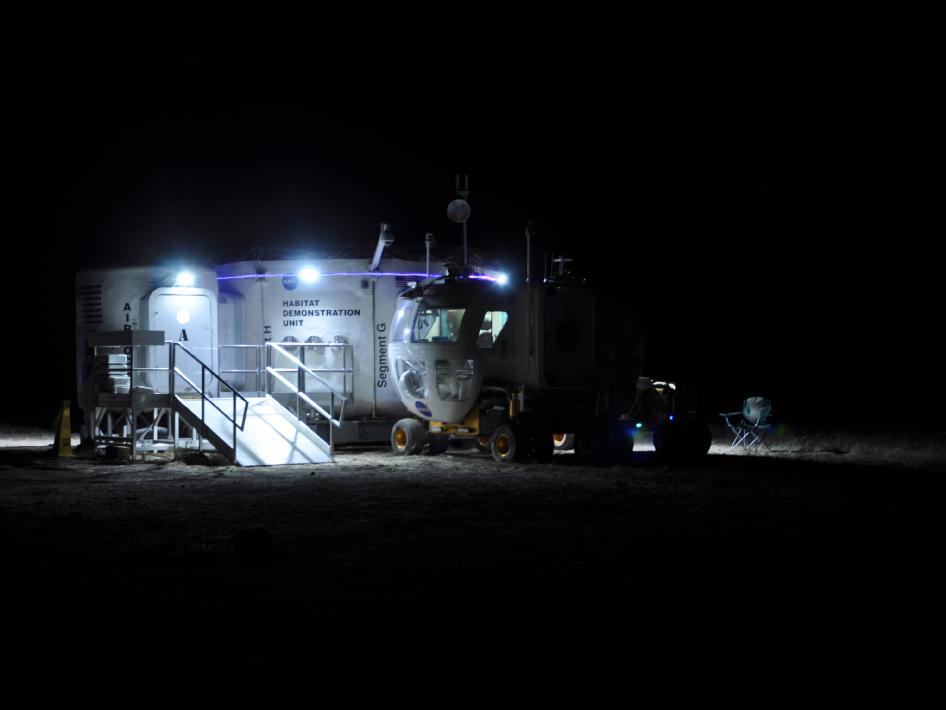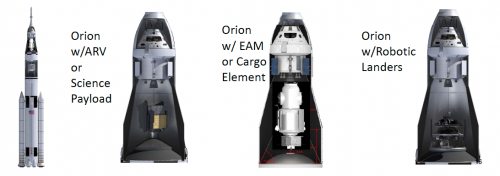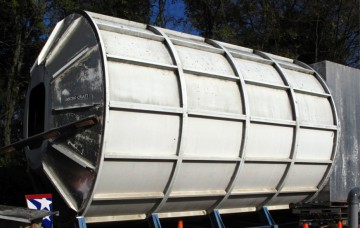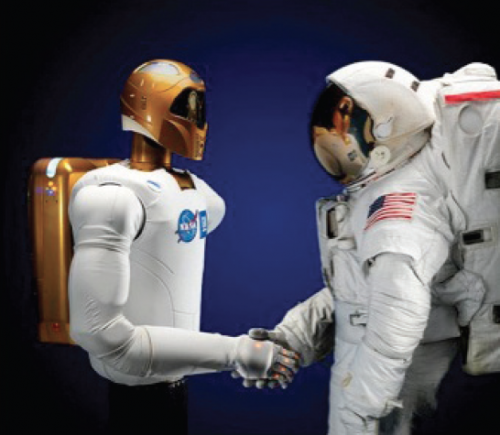
This week, NASA announced the selection of 12 partnerships within the commercial industry to help develop the exploration capabilities needed to pioneer humans to deep space destinations. Next Space Technologies for Exploration Partnerships, or NextSTEP, will work alongside NASA to advance concept studies and technology development projects in three key areas: advanced propulsion, habitation, and small satellites deployed from the agency’s Space Launch System (SLS). These companies will work to enable humans to explore cis-lunar space, the “proving ground” around our Moon, and the Red Planet.
“Commercial partners were selected for their technical ability to mature key technologies and their commitment to the potential applications both for government and private sector uses,” explained William Gersteinmaier, associate administrator for Human Exploration and Operations at NASA Headquarters. “This work ultimately will inform the strategy to move human presence further into the solar system.”

In NASA’s Broad Agency Announcement Virtual Industry Forum, the main objective of advanced propulsion is to advance the high technology readiness level (TRL) of high power Electric Propulsion systems. Three companies were selected to receive $400,000 to $3.5 million per year per award in the area of advanced propulsion projects. These companies are:
- Ad Astra Rocket Company of Webster, Texas
- Aerojet Rocketdyne Inc. of Redmond, Washington
- MSNW LLC of Redmond, Washington
These three companies will develop propulsion technology systems in the 50 kW to 300 kW range, operate broad power and specific impulse range, and test at a minimum system input power of 100 kW for 100 hours. NASA’s current version of electronic propulsion technology generates less than 5 kW. According to the agency, the “systems being developed for the Asteroid Redirect Mission (ARM) Broad Area Announcement (BAA) are in the 40-kilowatt range.”
In the area of habitation systems, the objectives are mainly to develop concepts, investigate technologies, and develop concepts of operations. Those selected for this particular partnership will “help define the architecture and subsystems of a modular habitation capability to enable extended missions in deep space. Orion is the first components of human exploration beyond low-Earth orbit and will be capable of sustaining a crew of four for 21 days in deep space and returning them safely to Earth.”

Seven NextSTEP habitat partnerships will have a one-year performance period. The projects will be valued anywhere from $400,000 to $1 million for research and development. These companies are:
- Bigelow Aerospace LLC of North Las Vegas, Nevada
- The Boeing Company of Pasadena, Texas
- Dynetics Inc. of Huntsville, Alabama
- Hamilton Sundstrand Space Systems International of Windsor Locks, Connecticut
- Lockheed Martin Space Systems Company of Denver, Colorado
- Orbital ATK of Dulles, Virginia
- Orbital Technologies Corporation of Madison, Wisconsin
The seven NextSTEP habitat partnerships will work on enhancing the Orion capsule to have the necessary capabilities to keep a crew of four alive for up to 60 days in proving ground, or cis-lunar space around our Moon. They will also demonstrate transit habitation capabilities for future Mars missions. The partners will address concepts and technology in:
- Transportation: lunar DRO operation, ISS docking flexibility, sub-systems management, remote or crewed, ARV compatibility, potential use for Mars transit
- Habitation: Habitable volume for crew and logistics, testing of ECLSS and associated sub-systems, Orion compatibility and mission extension
- Operations and Environment: Support EVA, support vehicle docking, extended lifetime, airlock capabilities, independent operations
In the area of small satellites, or CubeSat missions, the selected partnerships will fly their projects as secondary payloads on the first flight of the Space Launch System (SLS) and second flight of Orion on Exploration Mission (EM) -1. These projects will “address NASA’s strategic knowledge gaps in order to reduce risk, increase effectiveness, and improve the design of robotic and human space exploration.” These companies are:
- Morehead State University of Morehead, Kentucky
- Lockheed Martin Space Systems Company of Denver, Colorado
Flying their CubeSats on EM-1 provides a unique opportunity to propel these small satellites to deep space to explore, demonstrate, and perform science in that harsh environment. Lockheed Martin Space Systems and Morehead State University will receive a total value of $1.4 to $7.9 million per award.

All NextSTEP partnerships will have fixed-price contracts with technical/payment milestones that need to be met on time in order to receive monetary award. The awards received will also be combined with corporate-resource contributions the selected company will stipulate toward research and development efforts that benefit NASA and future commercial activities.
“This type of public-private partnership helps NASA stimulate the U.S. space industry while expanding the frontiers of knowledge, capabilities and opportunities in space,” said Jason Crusan, director of the Advanced Exploration Systems Division (AESD) of NASA’s Human Exploration and Operations Mission Directorate in Washington.
The strategic plan of NASA NextSTEP partnerships is to “expand human presence into the solar system and to the surface of Mars to advance exploration, science, innovation, benefits to humanity, and international collaboration.” NASA believes that the next step for human spaceflight is the development of the capabilities to pioneer humans to deep space and support long-duration missions in cis-lunar space.
NASA NextSTEP came up with a set of strategic principles for sustainable exploration to cis-lunar and deep space. Through strategic partnerships with the commercial industry the principles will come to fruition. Some of these principles are:
- Implementable in the near-term with the buying power of current budgets and in the longer term with budgets commensurate with economic growth
- Exploration enables science and science enables exploration
- Application of high Technology Readiness Level (TRL) technologies for near term missions, while focusing sustained investments on technologies and capabilities to address challenges of future missions
- Near-term missions opportunities with a defined cadence of compelling and integrated human and robotic missions providing for an incremental buildup of capabilities for more complex missions over time
- Opportunities for U.S. commercial business to further enhance the experience and business base
- Multi-use, evolvable space infrastructure, minimizing unique major developments
- Substantial international and commercial participation, leveraging current International Space Station and other partnerships.
NextSTEP is managed by the Advanced Exploration Systems Divison (AESD) of NASA’s Human Exploration and Operations Mission Directorate. AESD has the important role of finding new ways to develop and demonstrate new technologies for human space exploration missions to deep space.
Want to keep up-to-date with all things space? Be sure to “Like” AmericaSpace on Facebook and follow us on Twitter: @AmericaSpace
Missions » SLS » Asteroid Redirect (ARM) » Missions » SLS » EM-1 » Missions » SLS »




NewSpace proponents commonly libel the SLS as the “rocket to nowhere” while their favorite conveyance is actually the inferior lift vehicle. The SLS can deliver worthwhile payloads across cislunar space into lunar orbit. These payloads, in my view, are the building blocks of the next space age. Upper stage wet workshops and semi-expendable robot landers can be used to provide a true space station, shielded from space radiation generated by the worst possible solar events. The robots can land on ice deposits and take off with a load of harvested water, then transfer the water to workshops in lunar orbit- repeatedly. When this scenario is considered, it is the ISS that is a “space station to nowhere.” By adding a propulsion system to these fully shielded lunar space stations they become spaceships- quite unlike the ISS.
I would like to know how the crew will be protected from gama radiation when a mission to Mars is launched.
Thank you so very much for coming to the web, Gary.
We need more folks like you.
As publiusr, I thought I was the only SLS supporter out there save for the good folks here.